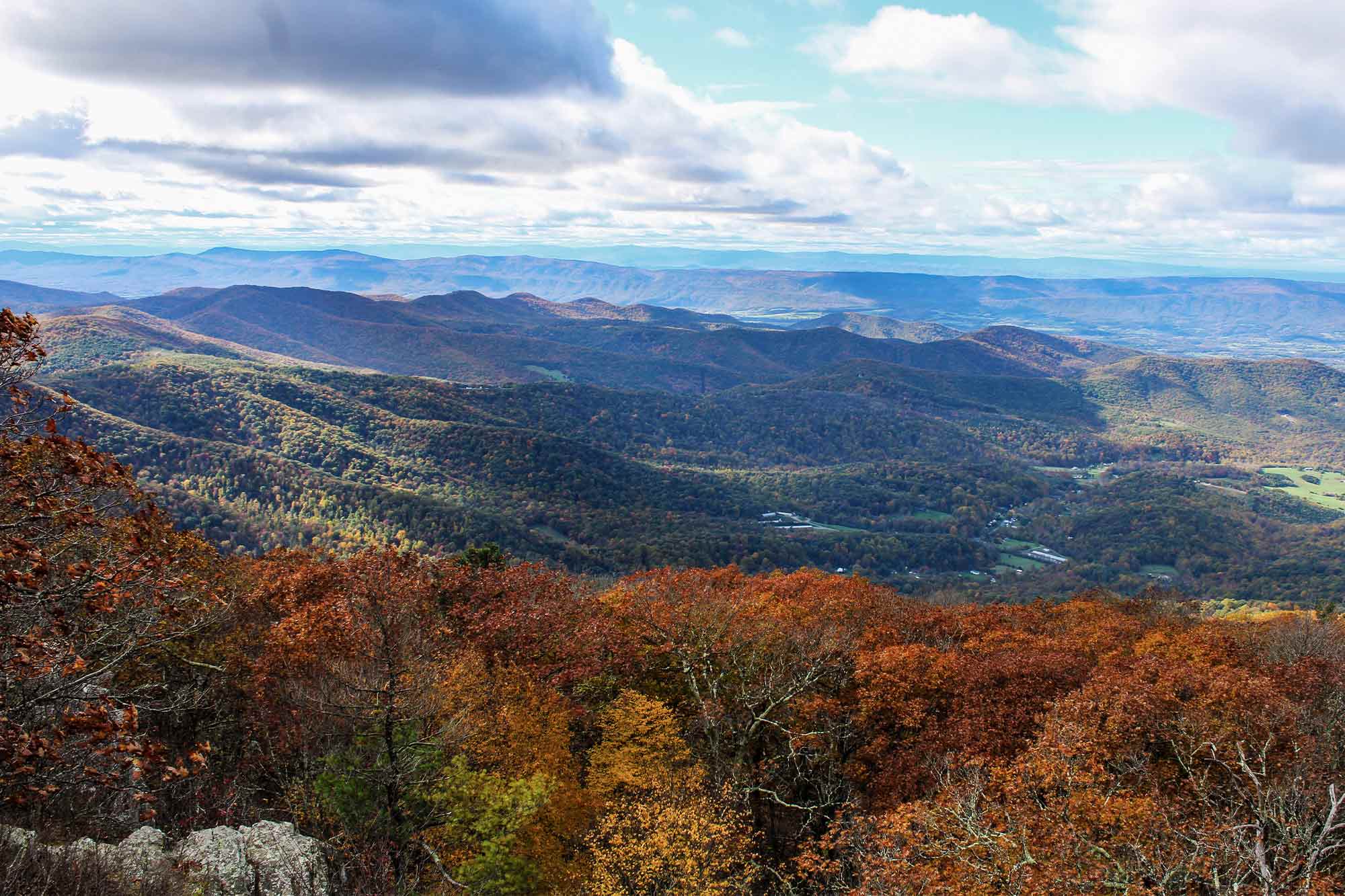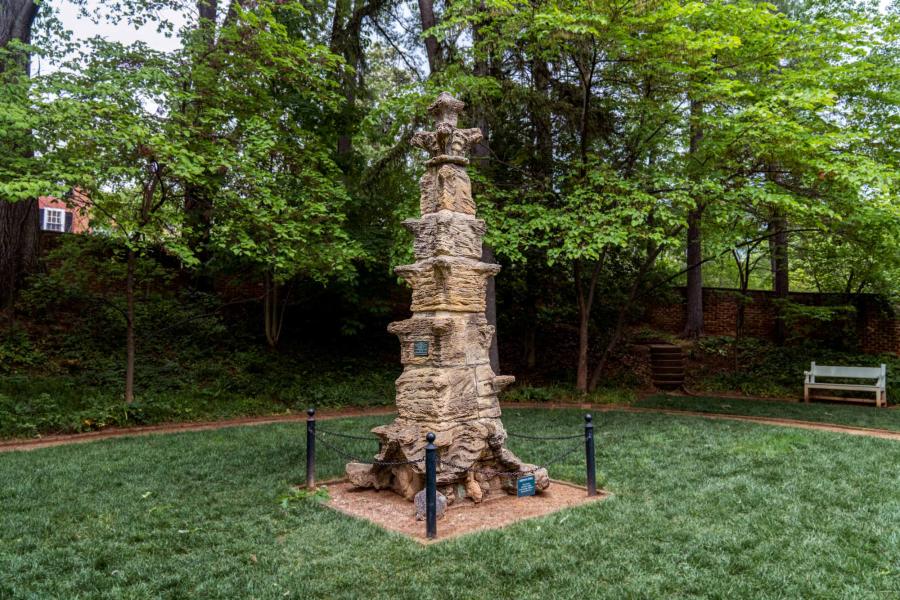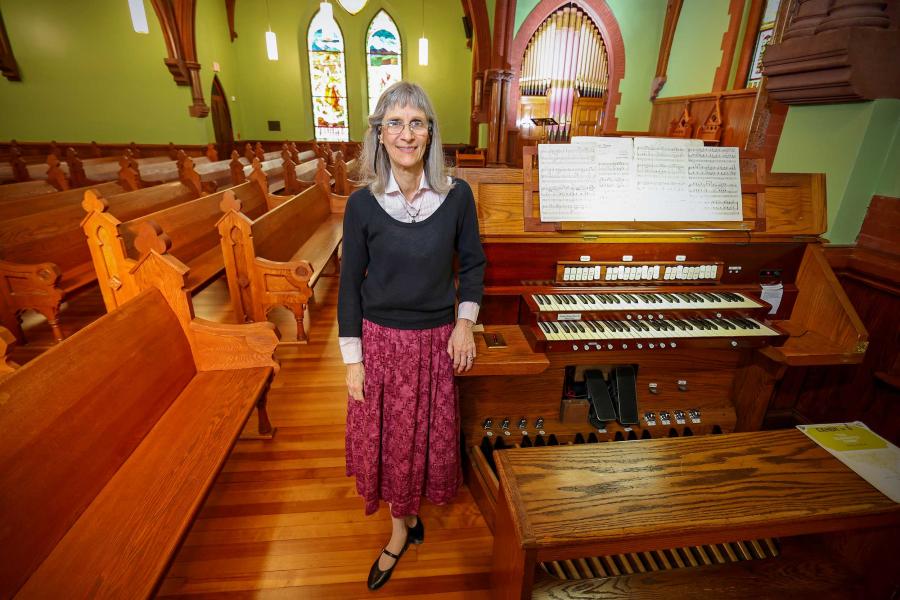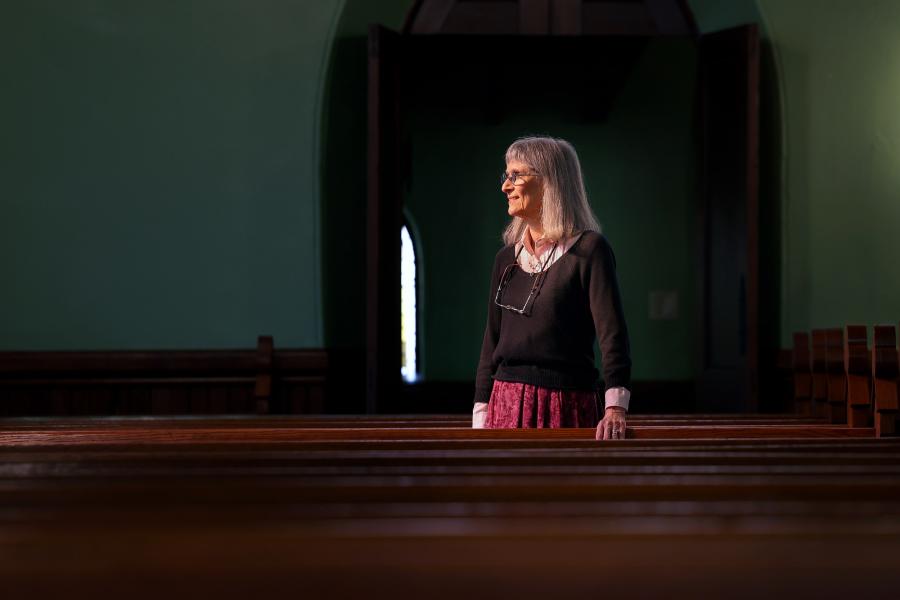It’s likely that few of the 1.5 million annual visitors to Shenandoah National Park stop to read the historical references explaining how the 200,000-acre park came to be.
The park’s own website makes modest mention of what happened: “The several hundred mountain residents who lived on the land that became the Park left behind their homes and communities, forced to start anew.” Other accounts say the displacement affected many more mountain residents.
The government-funded eviction of mountain families came as a wealthy businessman pushed to expand his private resort into the centerpiece of a national park. The tumult is the setting for University of Virginia assistant professor of English Margaret S. Marangione’s novel of historical fiction, “Across the Blue Ridge Mountains.” UVA Today caught up with Marangione by email to ask about her process of overlaying fictional characters on a backdrop of history.

“Across the Blue Ridge Mountains” is historical fiction but set against the real Central Virginia history of the people and families forced to leave their homes and their way of life. (Contributed photo.)
Q. How many families were displaced to create Shenandoah National Park?
A. About 1,000 families were displaced from five counties.
Q. What was the feeling at the time? Did these families leave willingly or reluctantly?
A. There was significant resentment and disbelief for most families.
Many of these families had lived in their home place for many generations, some from as early as the mid-1700s. There was also significant concern about how they would make a living off of the mountain, as they mostly ran sustainable farms. While some did leave willingly and all were compensated at below market value, many of the descendants of these families still have resentment about it today. There is significant cultural and historical trauma around the removals.
Q. How was this presented to the public?
A. That the families were being moved for their own good and that their “primitiveness” was holding America back from modernization. Additionally, they were demonized as being illiterate, inbred, violent – familiar “hillbilly stereotypes.”
One sociologist at that time said that the women did not feel pain in childbirth. These were headlines that ran in The New York Times and Washington Post.
Q. What drew you to this event as the setting for your novel?
A. The 1920s was such an interesting time in American history. There was such rapid and significant change and industrialization that got ushered in with the Model T Ford as well as the changing moral and ethical fabrics of society, all of which that had a role in the creation of the Shenandoah National Park.
Also, the age of the flapper and women’s right to vote and being caught between Victorian women’s roles and the new women like Amelia Earhart is significant for the main character, Mary.
Q. What challenges did you face as a writer in blending a historical account with a fictional character and story?
A. I wanted to stay true to the time period and many of the historical characters that have been written about previously, like George Freeman Pollock, the owner of Skyland; William Byrd; and various well-known mountain personas like Aaron Nicholson, the self-titled “King of Free State Hollow.”
But I also did not want to mischaracterize or judge them by a 21st-century lens. Interestingly, my publisher made me change one of the names of a historical figure because he was worried we would be sued. He said, “Readers are going to hate this guy by the end of the novel.” The character does not act nobly and even though I did not find any living descendants, I changed his name at the eleventh hour.
Media Contact
Article Information
June 3, 2025






